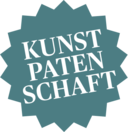Theorbo
2nd half of the 16th century, Manufacturer: Magno Tiefenbrucker
Theorbo
The chitarrone belongs to a type of lute which is fitted with a variable number of bass strings in addition to the six, fingered double-stringed courses of the standard instrument. As the bass strings require a greater length, the instrument is built with a second, longer neck which has its own pegbox. The bass strings do not run over the finger board and thus cannot be altered in pitch during playing. They are tuned diatonically, and each string serves as a single bass note. In order to adapt old lute bodies built for six courses to the requirements of later times, in the 17th and 18th century many of these instruments were modified and equipped with a second pegbox. They are sometimes referred to in German as “theorbierte Lauten” (theorbed lutes). (rh)
Lit.: Rudolf Hopfner: Masterpieces from the Collection of Historic Musical Instruments. A Short Guide through the Kunsthistorisches Museum Vienna, Vol. 1, Vienna 2019
Object data
Object Name
Theorbo
Culture
Italy Venice
Dated
2nd half of the 16th century
Manufacturer
Magno Tiefenbrucker (Venedig spätes 16 - frühes 17, Jhdt.)
Dimensions Cover size is a museum or exhibition-specific information. It does not specify the real dimensions of the musical instrument.
1650 mm x 470 mm x 150 mm
Image rights
Kunsthistorisches Museum Wien, Sammlung alter Musikinstrumente
Inv. No.
Sammlung alter Musikinstrumente, 41
Permalink (citable Link) to this page: www.khm.at/en/object/84716/
Kunst & Patenschaft
This object is still without a Art Patron. Accept the patronage and make sure that this cultural treasure is preserved for future generations.
Your donation is a direct and sustainable contribution to the scientific documentation, research, restoration, and presentation of the artworks of the Kunsthistorisches Museum Wien.

